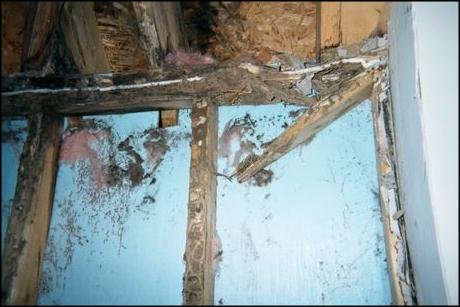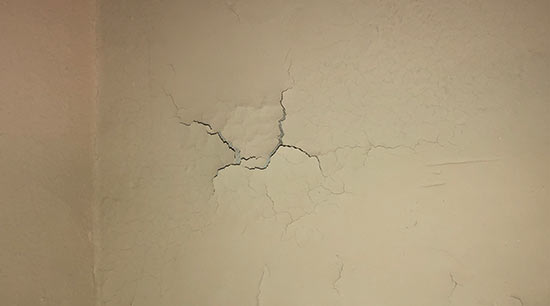Discovering and Resolving Water Stains on Wall Surfaces
Discovering and Resolving Water Stains on Wall Surfaces
Blog Article
Have you been in search of ideas around Water Stains on Walls?

Water stains on wall surfaces are not pleasurable to the eyes. Your house should lack spots on the walls, roof covering, or floorings. That is the perfect state of a residence as well as its structures. Sometimes it seems virtually unavoidable to experience water discolorations on walls in houses.
Homeowners staying in damp regions frequently handle the fear of water spots on wall surfaces. That doesn't have to be the instance for you. With accurate as well as well-rounded info on the causes of water stains and also timely repair work processes, you will certainly constantly be a step ahead of such occurrences. So, this short article assures to be a handy guide for you.
3 Common Causes of Water Discolorations on Walls
Contrary to common belief, water spots on walls do not constantly originate from inadequate structure products. There are a number of reasons for water discolorations on wall surfaces. These consist of:
Wet
When warm wet air meets dry chilly air, it creates water beads to form on the wall surfaces of buildings. This takes place in kitchens and bathrooms when there is heavy steam from food preparation or showers. The water droplets can tarnish the bordering walls in these parts of your home and also infect various other areas.
Moist or condensation influences the roofing system and also walls of buildings. When the wall surface is damp, it creates an appropriate atmosphere for the development of fungis as well as microbes.
Poor Water drainage
This will stop water from seeping into the walls. This web links to excessive dampness that you discover on the walls of your building.
So, the leading root cause of wet walls, in this case, can be an inadequate water drainage system. It can likewise be because of inadequate monitoring of sewer pipes that run through the structure.
Pipe Leaks
Many homes have a network of water pipes within the wall surfaces. This guarantees that the pipes are well away from the reach of destructive rodents. It constantly boosts the feasibility of such pipes, as there is little oxygen within the walls. This inhibits corrosion.
A downside to this is that water leak affects the wall surfaces of the structure as well as triggers widespread damage. An indication of malfunctioning pipelines is the look of a water stain on the wall surface.
Pro Tip
A houseplant in your house likewise enhances its humidity. So, if the house is already humid, you might intend to present houseplants with marginal transpiration. An example of appropriate houseplants is succulents.
Water Discolorations on Wall Surface: Repair Tips
Property owners would typically desire a quick fix when managing water discolorations. Yet, they would certainly quickly recognize this is counterproductive as the water discolorations repeat. Right here are a couple of useful pointers that will certainly direct you in the fixing of water stains on walls:
Final thought
No one desires to have water stains on wall surfaces in their house, it can happen to the ideal of us. This short article provides you take advantage of, as you now understand exactly how to handle this accident if it does happen.
It is always best to recruit professional services to assist repair the problems in your home.
Sometimes it seems practically inescapable to experience water spots on walls in residences.
In contrast to prominent idea, water stains on wall surfaces do not constantly stem from inadequate building products. There are several causes of water discolorations on wall surfaces. The water beads can tarnish the surrounding wall surfaces in these parts of your home as well as spread to other areas.
Here are a couple of valuable ideas that will certainly assist you in the fixing of water discolorations on walls:
CHECKING FOR WATER DAMAGE
Water damage can be costly, and it may begin before you even notice the first signs of trouble. Water damage can cause mold and mildew in your walls and floors, which can create an abundance of health concerns for your family. It can also lead to costly repairs of various appliances and general home fixtures. To avoid the pricey consequences of water damage, here are Warner Service’s top 5 places you should check:
The walls – The easiest place to spot the beginnings of water damage is on the walls and ceilings of your home. If water damage is present, there will most likely be water stains, especially around the windows and doorframes, and/or cracks in the drywall. If a stain looks unusual (discolored to brown, black or gray, raised texture), has a swollen appearance or is soft to the touch, contact a professional immediately. The pipes – To avoid water damage, consistently check the pipes in your kitchen (especially the dishwasher and ice maker), bathrooms, laundry room (specifically washing machines) and basement for corrosion, leaks and water stains. Pay special attention to where the pipes connect in your home and the location of caulking around the bathroom fixtures, including toilets, sinks, showers and tubs. Missing or loose caulking and grout could be signs of leaking water. This seepage can also quickly cause mold and rust, so double check your water heater and tank for wet spots on the floor. The floor – Water damage is very easy to spot on the floor. Look for any warping or buckling of the material, especially in the basement. If your home has wood flooring, look for bright white or dark stains. If your home has carpeting, keep it dry and clean. A damp carpet that smells of mold could cause water damage and health problems. To avoid this, consider installing floor pans under your appliances to help prevent damages from small, slow and undetected leaks. The basement and attic – If your basement or attic smells odd check for mold and mildew around the area, especially the valley where the roof meets. While you are inspecting those areas, check for wall cracks, floor stains, rust and dampness in the insulation. If you live in a colder and/or rainier climate, perform routine checks for water damage from melting snow or ice and rain. The exterior – Check the roof for damaged flashing and missing, cracked or curled shingles. There should also be no standing water anywhere outside your home. This could be caused by puddles, leaky rain gutters or hoses, poor drainage, or short gutter spouts. Invest in a sump pump system or water flow monitoring system, and perform routine maintenance on these outdoor appliances to avoid indoor water damage.

We are very interested in Indicators of Water Damage Behind Walls and I am praying you appreciated the blog entry. Do you know about anybody else who is excited about How to Remove Water Stains from Walls and Ceilings? Why not share it. Thank-you for going through it.
Automated Marketing Report this page